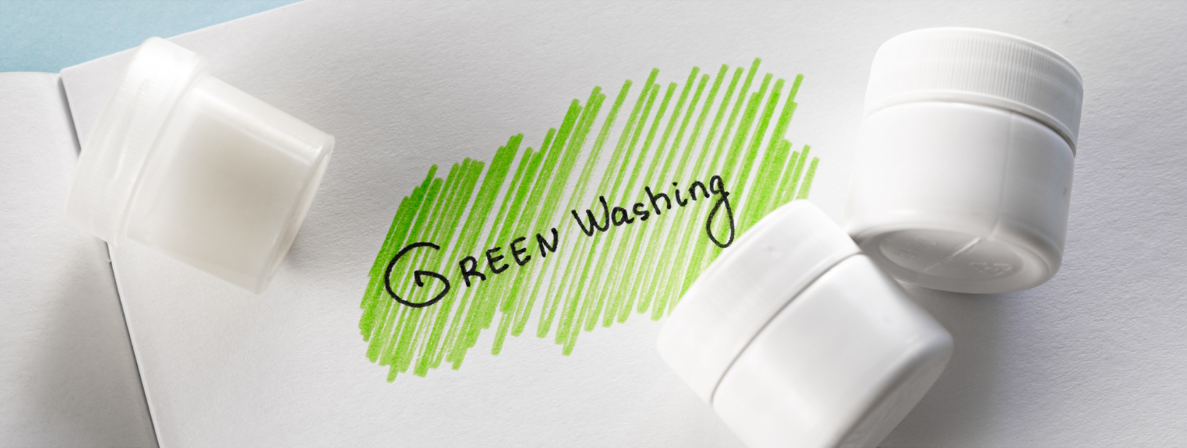
Introduction: Market Demand vs. Trust in Green Claims
According to recent surveys, over 70% of consumers are willing to pay a premium for eco friendly products. This immense market opportunity has prompted many companies to repackage their products and services under a "sustainable" label. However, not all companies promoting "green," "eco-friendly," or "sustainable" messages are acting in good faith.
What Is Greenwashing?
The term "greenwashing" was coined in the 1980s by environmentalist Jay Westerveld. It combines the words "green" and "whitewashing," and refers to misleading environmental claims that mask harmful practices. Greenwashing typically occurs on three levels:
Product-Level Greenwashing
Exaggerated claims of being “natural” or “eco-friendly” are made in packaging or advertising, while the actual content of sustainable ingredients is negligible (e.g., a product labeled “natural” contains less than 10% natural components).
Corporate-Level Greenwashing
Companies may showcase small-scale CSR or environmental projects to distract from the environmental damage caused by their core operations.
Policy-Level Greenwashing
Governments or organizations introduce carbon reduction programs—such as carbon offset mechanisms—that may create the appearance of sustainability without reducing real emissions, and in some cases, even loosening compliance thresholds.
⚠ Market Consequences of Greenwashing
- Consumer Misguidance: Buyers pay more for “green” products based on ethical intent, only to receive goods with minimal or even negative environmental impact.
- Trust Erosion: Once misled, consumers may begin to distrust all sustainability claims, which harms the market development of truly eco-conscious products.
Regulatory Developments Against Greenwashing
In response, legal frameworks around the world are evolving to hold companies accountable for unsubstantiated sustainability claims. Regulatory directions include:
- Standardization: Unified formats for environmental assessments and reporting
- Third-Party Verification: Independent validation of all environmental claims
- Penalties: Increased financial penalties for misleading claims
- Consumer Compensation: Mechanisms for consumer redress and reimbursement
- Transparency Requirements: Mandatory disclosure of environmental data and action plans
📊 Greenwashing by the Numbers
42% of corporate environmental claims published online may be deceptive or unverifiable.
58% of global executives admit their companies have engaged in greenwashing; in the United States, this figure rises to 68% .
66% of executives worldwide question the authenticity of their company’s sustainability efforts.
36% of companies have clear tools in place to measure their environmental performance.
Case Studies: Greenwashing Has Become a Legal Liability
1️⃣ Shein Case (France, 2025):
The DGCCRF fined Shein €40 million for deceptive discount practices and for promoting an “eco collection” without sufficient substantiation, violating fair consumer trade principles.
2️⃣ DWS Case (Germany, 2025):
DWS, the asset management arm of Deutsche Bank, agreed to pay €25 million in settlements after jointly being investigated by German and U.S. regulators for overstating ESG performance—marking the first major ESG greenwashing penalty in the financial industry.
Industry Recommendations: How Brands and Suppliers Should Respond
🔸Prevent Greenwashing at the Source: Prioritize material selection that aligns with LCA (Life Cycle Assessment) methodologies.
🔸Adopt External Verification: Third-party certifications enhance credibility in sustainability communication and are increasingly required for compliance.
🔸Ensure Data Transparency and Ongoing Disclosure: Publish carbon footprint results and progress reports regularly to build long-term stakeholder trust.
HwaFune's Summary of Sustainable Fabric Materials:
| Material/Brand | Material Source | Sustainability Highlights |
| Bio Polyester Sorona® |
Fermented corn → Glucose → PDO + PTA → Polymerization → Yarn | Up to 30% CO₂ and 63% GHG reduction vs. Nylon; USDA, OEKO-TEX® Standard 100 Class I |
| Bio Nylon BASF® | CPL + Biomethane + Castor Oil→ Yarn | Reduces fossil dependence and carbon emissions; Certified under RCS, ISCC PLUS, REDcert² |
| Recycled Polyester UNIFI® | 100% bottles → Washed, sorted, flaked, polymerized with EG → Chips → Yarn | Fully post-consumer; Verified by U Trust®, FiberPrint®, GRS, SCS Recycled Content |
| Recycled Nylon Seawastex® | Melted and purified post-industrial nylon waste (e.g., fishing nets) → Caprolactam → Yarn | Traceable batch system (Transaction Certificate); GRS certified |
✅ Conclusion: Building Authentic Sustainability from the Ground Up
At Hwafune, we place strong emphasis on sourcing sustainable textile materials with clearly defined bio-based content, verified third-party environmental certifications, and traceable recycled fiber origins.
All fabrics—whether derived from biopolymers or recycled polyester/nylon—undergo rigorous environmental and technical evaluations to ensure carbon reduction claims are based on scientific evidence, not vague marketing language.
In an era of intensified scrutiny over green certifications, eco-friendly fabric labeling, and supply chain compliance, transparent sourcing and responsible communication are no longer optional. These are shared responsibilities between functional fabric suppliers and forwardlooking brands across the apparel and outdoor industries.
